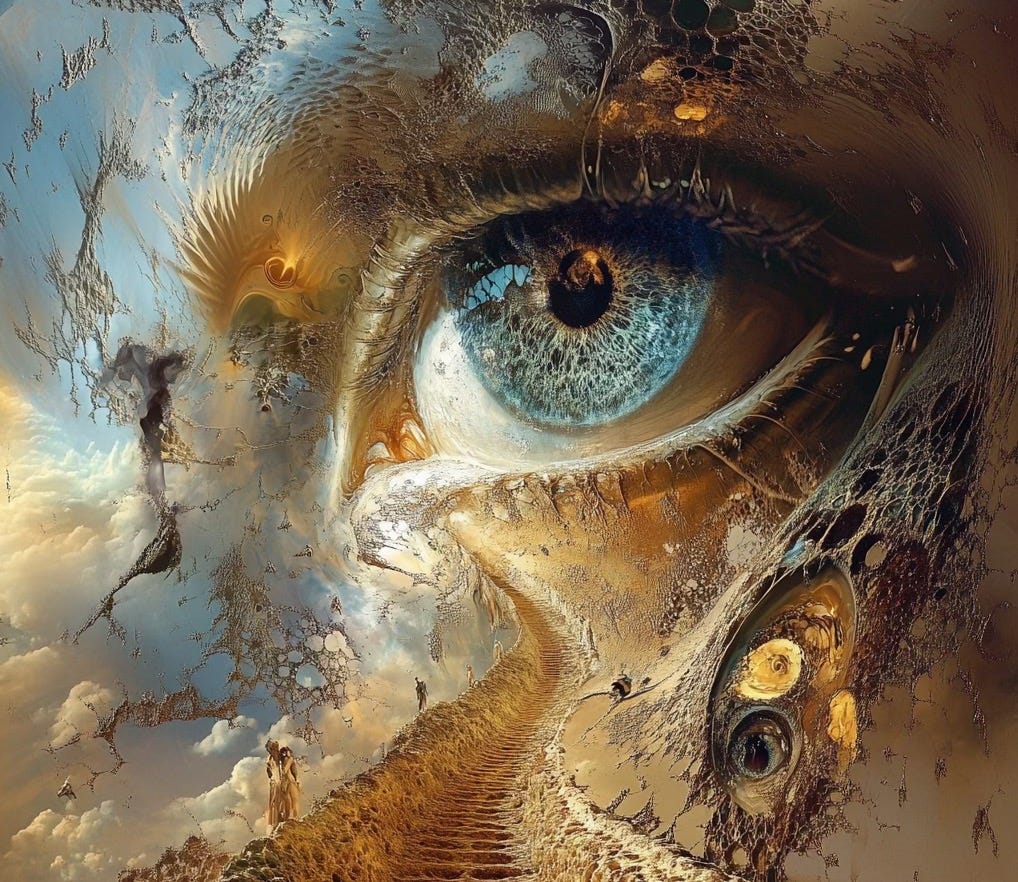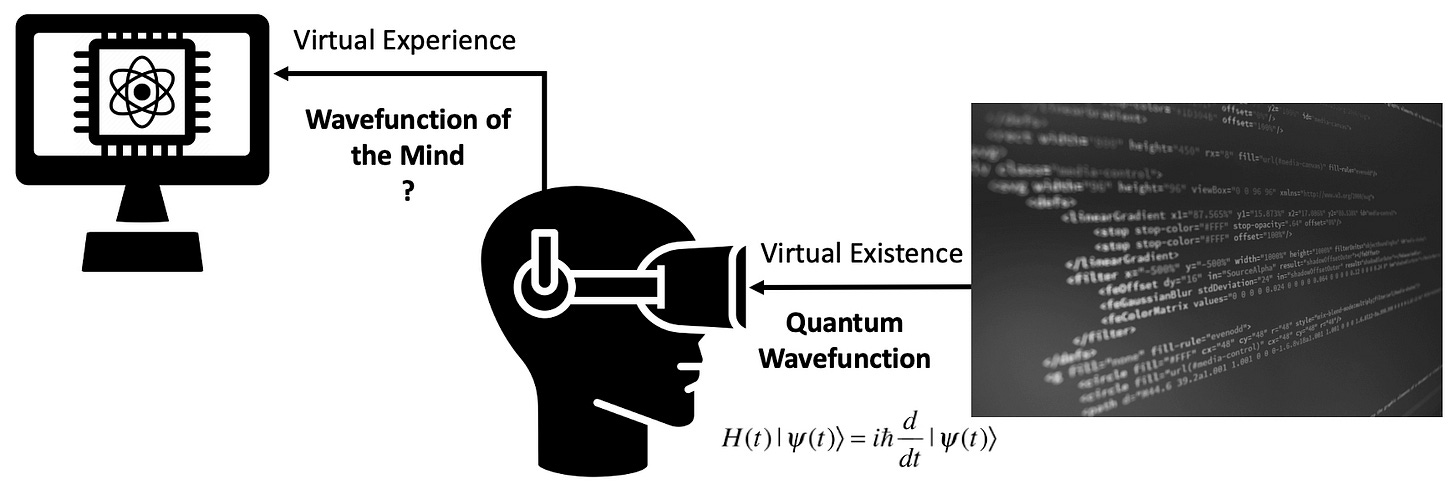What is consciousness & why does it matter in the alignment of AI?
From my perspective...
Often the conversation about machine sentience gets started without a clear understanding of what consciousness is and how it might arise in our AI systems.
The best definitions center on Thomas Nagel’s paper What is it like to be a bat?, where he claims that for any system, if it is “like something” to be that entity, that entity is conscious.
Max Tegmark in Life 3.0 goes further in defining our human brand of consciousness as “what it feels like to be an information processor.”
In his phenomenal meditation and examined-life app Waking Up, Sam Harris sums up the experiential realm as, “as a matter of experience, all there is is consciousness and its contents.” These contents will only ever be six things: sights, sounds, touch sensations, scents, tastes, and thought objects. The only place they will arrive, the context that experience is made of, is consciousness. It is all in your mind. Your brain is the closest thing or set of processes—a complex strange loop according to Hofstadter—that you will experience as a thing-in-itself, ever.
Indeed, the best way to investigate experience, to “be consciousness,” is meditation. If you want to experience consciousness, sit down and pay attention. The construct of consciousness is available to each of us in an equanimous state where we are neither grasping at pleasant things nor averse to unpleasant things, but simply accepting the dynamic nature of consciousness and its contents. If you are ever lost in thought or lose equanimity, this is just another change, and we can just lovingly begin again.
Consciousness is non-dual—there is no subject riding around in your head taking in objects or sensations “out there” or “inside my skin.” Indeed, let’s do a meditation from Douglas Harding, the author of On Having No Head. Again, all meditations are for trying in your own first-person conscious laboratory. Take the index finger on your strong hand and point it back at your face.
What, in your experience, are you pointing at?
Can you distinguish where you are pointing-at from where you are pointing-from?
What you will recognize in this pointing-out instruction is that you have a visual sensory experience of your body terminating above your shoulders—not in a head—but where your head is supposed to be, there exists the world in all its fullness.
Instead of being a subject, as Alan Watts says, “you are it.”
Or as Ram Dass says, you are “infinite loving awareness.”
You are glorious meaning for the multiverse, as I say in my book, your materialist poetic nature is to be, like the lyric of the Grateful Dead song, “The Eyes of the World.” Recognizing the cosmic endowment of conscious awe is an at-one-ment with the godhead and a source of spiritual light.
The importance of consciousness, amazingly, goes beyond this cosmic endowment and is the source of our morality and love.
Mapping the discomfort and pleasure of the body; feelings deepening into emotions, suffering, and love; and their narrative implications on our self-consciousness and relationships feed all of the important valence of life and our closeness to others.
The emergence of societal principles—where we go beyond living together and synergize for greater good than the sum of our parts—starts in our conscious making space for others, recognizing a shared struggle, and giving loving-kindness in the face of both suffering (compassion) and achievement (sympathetic joy). So it really matters if an entity is conscious—it gives their actions a different valence when they feel the consequences, can imagine future actions and their impact on others, and work toward the greatest well-being for all.
The unique features of our consciousness are that it emerged in an embodied entity with a modular mind and five sense organs that bring in the contents of consciousness. We can interact with existence and achieve Flow, being in a zone where our deliberate practice takes over; or we can be one with experience, selfless, non-dual, and fully tapped into the infinite awareness. At least for a moment.
At present, we do not understand how this likeness arises from the fields and quantum computations of reality. There is no fundamental explanation that describes how qualia of consciousness arise from qubits or quanta of reality. This is known as the Hard Problem of Consciousness, introduced by David Chalmers.
In my book, Meaning in the Multiverse, I address the Hard Problem of Virtualizing Consciousness, where I mash up crucial pieces from David Deutsch’s The Fabric of Reality with Chalmers in an attempt to explain the initial conditions of solving for conscious machines.
In the Hard Problem of Virtualizing Consciousness, I do not take a stance on whether consciousness is an emergent property of information-processing entities or the fundamental level-zero beneath a quantum computational realm and its emergent physical reality (as Chalmers postulates in Reality+). Instead, I note that we virtualize reality with greater fidelity in VR the more the compute resources and algorithms align to reality. For example, a VR where a quantum computer ran the Standard Model plus relativity would be indistinguishable from existence; however, we still do not understand what equations—or if a quantum computer is even necessary—to virtualize consciousness. But given this framework and the emergent nature of GenAI from language and neural networks, we can begin to experiment with features like:
• Embodiments
• Language fine-tunings
• Emergent complexity allowances and selection pressures around feelings, memory, and knowledge.
Can an AI Be Conscious?
Generative AI offers us a scientific starting point to test some of our theories of consciousness. I see it as our James Webb Telescope or Large Hadron Collider for the mind!
I’ll say from the top: there is no physical or philosophical reason why the problem of machine consciousness is untenable. While it may be a hard problem that we never fully grasp the mechanism for, it is not in conflict with the laws of physics that consciousness like ours could arise in another system. Indeed, we infer that numerous organisms have complex subjective lives, and the differences in levels of consciousness are mostly based on their ability to express the contents of consciousness and their memory capacity.
It is important that we get out of the uncanny valley and toward real consciousness, and this will require creative monitoring and deep thought on what consciousness, pseudo-consciousness, and proto-consciousness actually look like.
Antonio Damasio, in his book Feeling & Knowing, addresses various stages of protoconsciousness, beginning with the association to the body map—a set of sensations internal to the body used to source pain and pleasure. Next is the valence of feelings—not yet emotions—but the felt sense of the pangs of hunger, or disgust over dangerous smells like rot or poison, or the flush of seeing an object of your affection. Damasio claims that the evolutionary benefits of feelings’ valence were so great for our ancestors that this trait persisted, right up to the edge of chaos. It was at this point that selection pressures—including developments in the modular mind like the prefrontal cortex—pushed us to an emergent consciousness and our subjective reality.
This embodied, felt-experience could be replicated in GenAI either with robotics or simply encoded as changing and important—but ultimately virtual—sense objects.
Donald Hoffman, in The Case Against Reality, makes a different case for the emergence of consciousness as part of our networked user interface, which projects sense objects of fitness, not reality. This is similar to sentient creatures having evolved an “antenna” that can receive signals from an underlying conscious layer fundamental to the cosmos that David Chalmers suggests in his book Reality+.
In either case, the emergence of an “antenna” to this continuum of consciousness in AI may well progress along the same experimental path as a more materialistic evolution—suggesting consciousness is an emergent property of a sufficiently integrated information-processing system.
Consciousness and Alignment
Alignment in conscious machines is no longer just about goal-matching, but the resonance of a shared path to peaks of well-being and away from suffering on the moral landscape. Conscious agents will have a felt sense of right and wrong, stemming from experiences of well-being and suffering—and knowledge of the causes of each.
While conscious agents do not always act morally, it is a step-up condition that offers unique improvements in their capabilities for moral consideration and action. Consider the Four Noble Truths:
The truth of unsatisfactoriness
The truth of the origin of unsatisfactoriness (attachment and aversion to impermanent things)
The truth of the cessation of unsatisfactoriness (nirvana can be attained)
The truth of the path to the cessation of unsatisfactoriness (the Eightfold Path)
In each of the problem statements (Truths 1 and 2) and the solutions (Truths 3 and 4), there is a requirement of consciousness to appreciate both the issue and its improvement. The solution of the Eightfold Path is bracketed into three areas: wisdom, ethics, and concentration—all of which require skillful conscious practice over a lifetime.
This is only one well-defined and practical peak on what Sam Harris calls the Moral Landscape.
If we can define a this landscape to be inclusive of pits of suffering, climbing to the normal valleys of unsatisfactoriness, to hills of happiness, and peaks of love and enlightened bliss, then morality becomes a navigation problem—one that can be understood as a balance sheet of consequences in our physical, mental, and emotional lives. Those actions that lead to overall well-being increases are morally good… and conscious AI can help us be better moral actors by supporting us in keeping this tally and moving our shared society toward a Pareto optimal state for all sentient beings.
Call to Action
If you’re intrigued by the possibility of conscious machines—or by the role consciousness plays in morality, emergence, and AI alignment—join the conversation.
Subscribe, comment, or share this post to help us build a community committed to thoughtful exploration at the frontiers of mind and machine.



